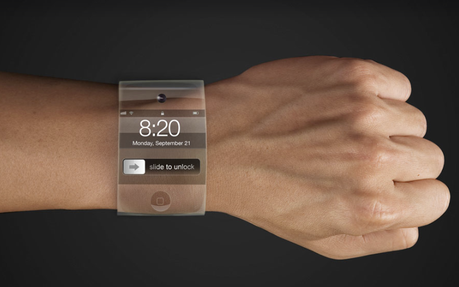It’s no secret that while smartphone adoption in the U.S. continues to rise – now accounting for 57 percent of the mobile market according to comScore – rollout of in-store mobile payments has been slow and fragmented. Some experts attribute it to infrastructure challenges or hesitancy on behalf of consumers due to security risks. Others suspect the market just isn’t ready
Despite these challenges, experts still predict that mobile payment adoption is set to take off. According to research from Javelin, the total amount of mobile payments at the point of sale will increase from $398 million last year to $5.4 billion by 2018. But it begs the question: What’s going to drive the drastic shift in consumer behavior that would lead to this market growth? The answer: wearable technology
Mobile payments, as in payments made using your smartphone, have been slow to take off, particularly in the U.S. NFC naysayers continue to suggest that the answer lies in development of alternative technologies such as an enhanced, low-energy Bluetooth solution that will make mobile payments a true, widespread reality.
But, we don’t necessarily need a new technology to replace NFC. It works, it’s incredibly secure, and it’s ready. Instead, we need a new kind of device for which NFC as a payment solution truly makes sense for the consumer. We need a wearable device.
Many predicted that Apple would incorporate NFC into the iPhone 5, but when the company went with the new Passbook feature instead, people instead took it as a sign that Apple still didn’t think the market was ready for mobile payments. But, what if Apple realized more, that their decision wasn’t a knock against NFC, or a sign that they needed a better technology, but instead, that the smartphone as a device isn’t inherently conducive to driving mass, in-store mobile payment adoption?
A wearable device, on the other hand, could be that solution. Whether Apple puts out their iWatch tomorrow or next year, I’m willing to bet that a transaction technology will be a key feature. If it’s tomorrow, that technology is likely NFC. If it’s next year, maybe they will have cracked the code on an enhanced low-energy Bluetooth that does it all. But for now it’s not really about the technology — it’s about the device.

The Year of Wearables
With the big players like Google, Samsung, Apple and most recently, Microsoft announcing their plans to develop their own wearable devices, it’s clear why many are calling 2013 the year of wearable computing. In fact, IMS Research predicts that the wearable technology market will exceed $6 billion by 2016.
But in order for this movement to really stick and drive adoption among the masses, the bigger players must add a new functionality to these devices that would address a much larger market, a functionality that would not only suit the tech-obsessed, but would make both a 20-something-year-old sibling and a 60-something-year-old mother run to the store.
When the iPhone was first introduced in 2007 it truly revolutionized consumer behavior. Now if you walk down the street or look around you on a crowded subway car, everyone around you is on his or her phone texting, reading, watching, searching, and consuming. It’s a do-it-all device that so many of us have become absolutely dependent on.
The smartphone has made such an impact mostly due to its design, functionality and convenience. The iPhone in particular has such an intuitive user interface, making it easy to navigate and even easier to get hooked on. In order for a wearable to have a similar effect, it will need to do more than just send alerts to your wrist.
The wrist-worn wearable device, because of its body positioning and therefore its inherently advanced security, has the ability to make it the device that you don’t leave home without — the device that could eventually replace the smartphone. Combining the Pebble Watch and the FuelBand in a wearable to deliver both alerts and activity tracking to your wrist-worn device has a certain appeal, but in order to drive mainstream adoption, the new device needs a technology that would extend its functionality and drive a similar shift in consumer behavior caused by the iPhone.
Right now, NFC is the answer. It’s ready and it’s capable. It wouldn’t just make this wrist-worn device a mobile payments solution, but would also allow this “watch” to act as your bus pass, key card at work, open your garage and not only unlock your apartment door, but your entire workstation. This is the technology that could take smartwatches from cool-kid appeal to the mainstream. It would not only drive widespread adoption of wearables but also drive adoption of in-store mobile payment solutions.
